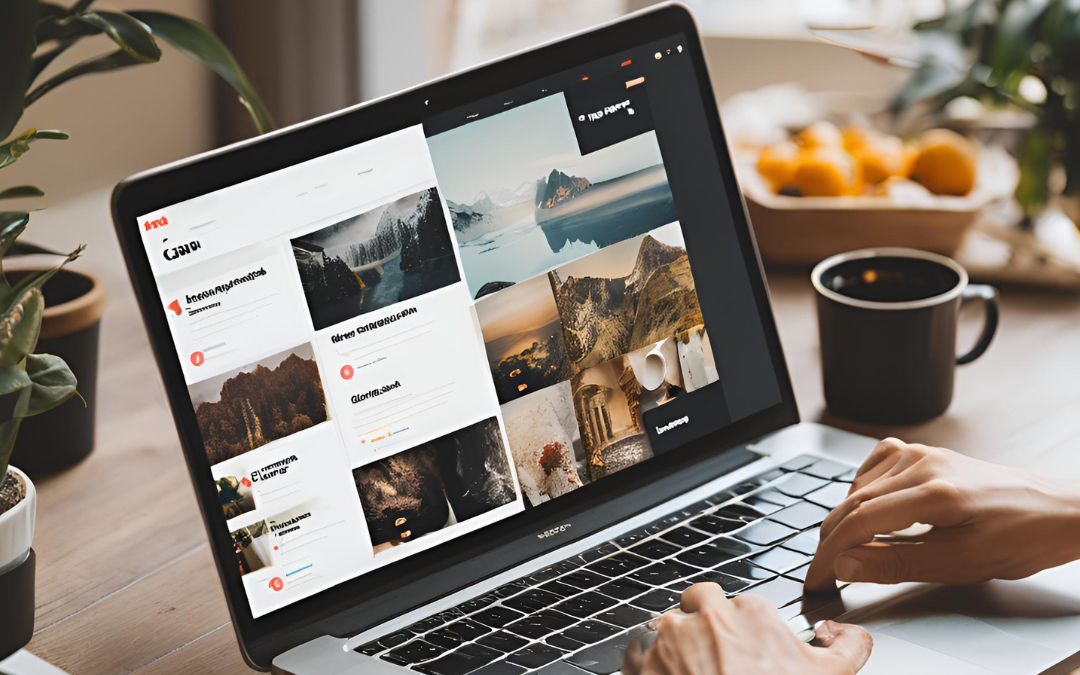Introduction
Contents
Creating a website that not only looks great but also performs well can seem daunting. But fear not! By focusing on the key signs of good web design, you can craft a site that wows your visitors and achieves your business goals. Let’s dive into the essentials of effective web design.
Intuitive Menu Structure: Imagine walking into a store where everything is perfectly organized. You know exactly where to find what you need. Your website’s menu should provide the same experience. Group related pages together, use drop-down menus for subcategories, and always include a search bar. Clear Call-to-Actions (CTAs): CTAs are the signposts that guide your visitors. Whether it’s a “Buy Now” button or a “Learn More” link, CTAs should be noticeable and enticing. Use action-oriented language and place them where they’re easy to find, such as at the end of a blog post or on your homepage.

Web Design
Responsive Design
Mobile Optimization: Picture your website as a liquid that adapts to any container it’s poured into. That’s the essence of responsive design. Use flexible grids, scalable images, and CSS media queries to ensure your site looks great on any device. Cross-Browser Compatibility: Just as you wouldn’t want a restaurant that only caters to a specific group, your website should work flawlessly on all browsers. Regularly test your site on browsers like Chrome, Firefox, Safari, and Edge to catch any issues early.
Visual Appeal
Aesthetic Consistency: Consistency breeds familiarity, and familiarity breeds trust. Stick to a limited color palette, use no more than two or three fonts, and ensure your headings, subheadings, and body text follow a consistent style. High-Quality Images and Graphics: Visual content can make or break your website. Use crisp, high-resolution images and custom graphics that reflect your brand’s personality. Steer clear of generic stock photos that can make your site look uninspired.
Fast Loading Times
Optimized Images: Large, uncompressed images are like heavy luggage that slows you down. Use tools like Photoshop or online services to compress images before uploading them. This will keep your site nimble and quick. Minimal Use of Plugins: Plugins are great, but too many can bog down your site. Evaluate the necessity of each plugin and deactivate or delete those that aren’t essential. Keep your site lean for optimal performance.
Accessibility
Screen Reader Compatibility: Accessibility is about inclusivity. Add descriptive alt text to images, use ARIA (Accessible Rich Internet Applications) landmarks, and ensure your site can be navigated by screen readers. This makes your site welcoming to everyone. Keyboard Navigation: Keyboard-friendly navigation ensures that users with motor disabilities can easily move around your site. Use logical tabbing order, provide visible focus indicators, and ensure all interactive elements can be accessed via keyboard.
SEO-Friendly
Proper Use of Keywords: Think of keywords as the bread and butter of SEO. Research relevant keywords for your content and integrate them naturally into your headings, subheadings, and body text. This helps search engines understand your content and rank it accordingly. Optimized Meta Tags: Meta tags are like the billboards that attract visitors to your site. Craft unique title tags and meta descriptions for each page. Keep them concise, use primary and extended keywords, and make them compelling to encourage clicks from search results. By focusing on these essential signs of good web design, you can create a website that is not only visually appealing but also functional, accessible, and optimized for both users and search engines. Happy designing!

